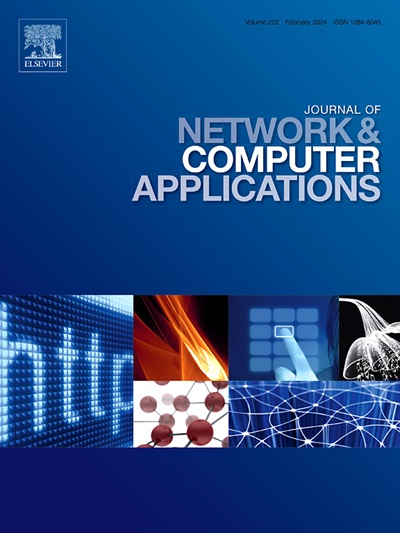基于改进联邦学习的物联网动态频谱接入方案
IF 8
2区 计算机科学
Q1 COMPUTER SCIENCE, HARDWARE & ARCHITECTURE
引用次数: 0
摘要
传统的频谱管理模式已经不能满足物联网设备对频谱资源高效利用的日益迫切的需求。动态频谱接入是一种新兴的解决方案,它允许设备根据实时需求和环境变化,智能地选择合适的频谱资源。在本文中,我们提出了一种基于联邦深度强化学习框架的动态频谱访问方案,该框架结合了联邦学习、图神经网络(GNN)和深度Q网络(DQN)。在该方法中,GNN承担了q值预测任务,充分发挥了其捕捉设备间关系和环境特征的能力。与此同时,DQN通过与环境的互动来学习,并不断调整其策略以最大化长期累积奖励。为了提高模型的稳定性和学习效率,我们还采用了经验回放缓冲和固定间隔更新目标网络等技术。特别是在联邦学习中使用feage算法,有助于协调跨多个设备的知识共享和模型更新,进一步提高整个系统的性能和运行效率。经过多次仿真训练,结果表明,本文方案的系统模型在保持联邦学习的隐私保护优势的同时,在收敛效果和稳定性方面接近甚至优于传统的联邦深度强化学习模型。特别值得注意的是,在操作效率方面,本文的方案明显优于传统的联邦深度学习模型。本文章由计算机程序翻译,如有差异,请以英文原文为准。
A dynamic spectrum access scheme for Internet of Things with improved federated learning
The traditional spectrum management paradigm is no longer sufficient to meet the increasingly urgent demand for efficient utilization of spectrum resources by Internet of Things (IoT) devices. Dynamic spectrum access, as an emerging solution, allows devices to intelligently select appropriate spectrum resources based on real-time demands and environmental changes. In this paper, we propose a dynamic spectrum access scheme based on a federated deep reinforcement learning framework, incorporating federated learning, graph neural networks (GNN), and deep Q networks (DQN). In the method, the GNN undertakes the Q-value prediction task, giving full play to its ability to capture inter-device relationships and environmental features. Meanwhile, the DQN learns by interacting with the environment and continuously adapts its strategy to maximize long-term cumulative rewards. To enhance the stability and learning efficiency of the model, we also apply techniques such as empirical playback buffering and updating the target network at fixed intervals. In particular, the use of the FedAge algorithm in federated learning helps to coordinate knowledge sharing and model updates across multiple devices, further enhancing the performance and operational efficiency of the entire system. After several simulation training, the results show that the system model of this paper’s scheme is close to or even better than the traditional federated deep reinforcement learning model in terms of convergence effect and stability while maintaining the privacy-preserving advantages of federated learning. Particularly noteworthy is that in terms of operational efficiency, this paper’s scheme significantly outperforms traditional federated deep learning models.
求助全文
通过发布文献求助,成功后即可免费获取论文全文。
去求助
来源期刊

Journal of Network and Computer Applications
工程技术-计算机:跨学科应用
CiteScore
21.50
自引率
3.40%
发文量
142
审稿时长
37 days
期刊介绍:
The Journal of Network and Computer Applications welcomes research contributions, surveys, and notes in all areas relating to computer networks and applications thereof. Sample topics include new design techniques, interesting or novel applications, components or standards; computer networks with tools such as WWW; emerging standards for internet protocols; Wireless networks; Mobile Computing; emerging computing models such as cloud computing, grid computing; applications of networked systems for remote collaboration and telemedicine, etc. The journal is abstracted and indexed in Scopus, Engineering Index, Web of Science, Science Citation Index Expanded and INSPEC.
 求助内容:
求助内容: 应助结果提醒方式:
应助结果提醒方式:


